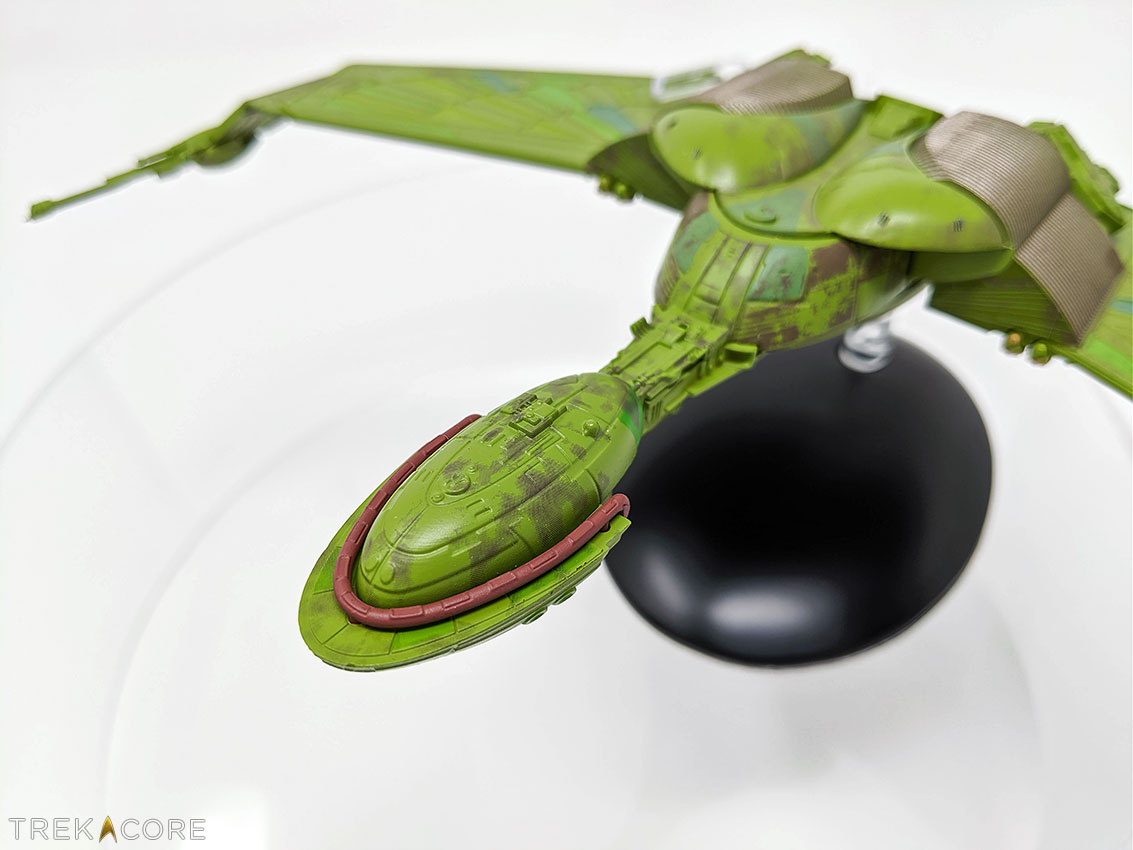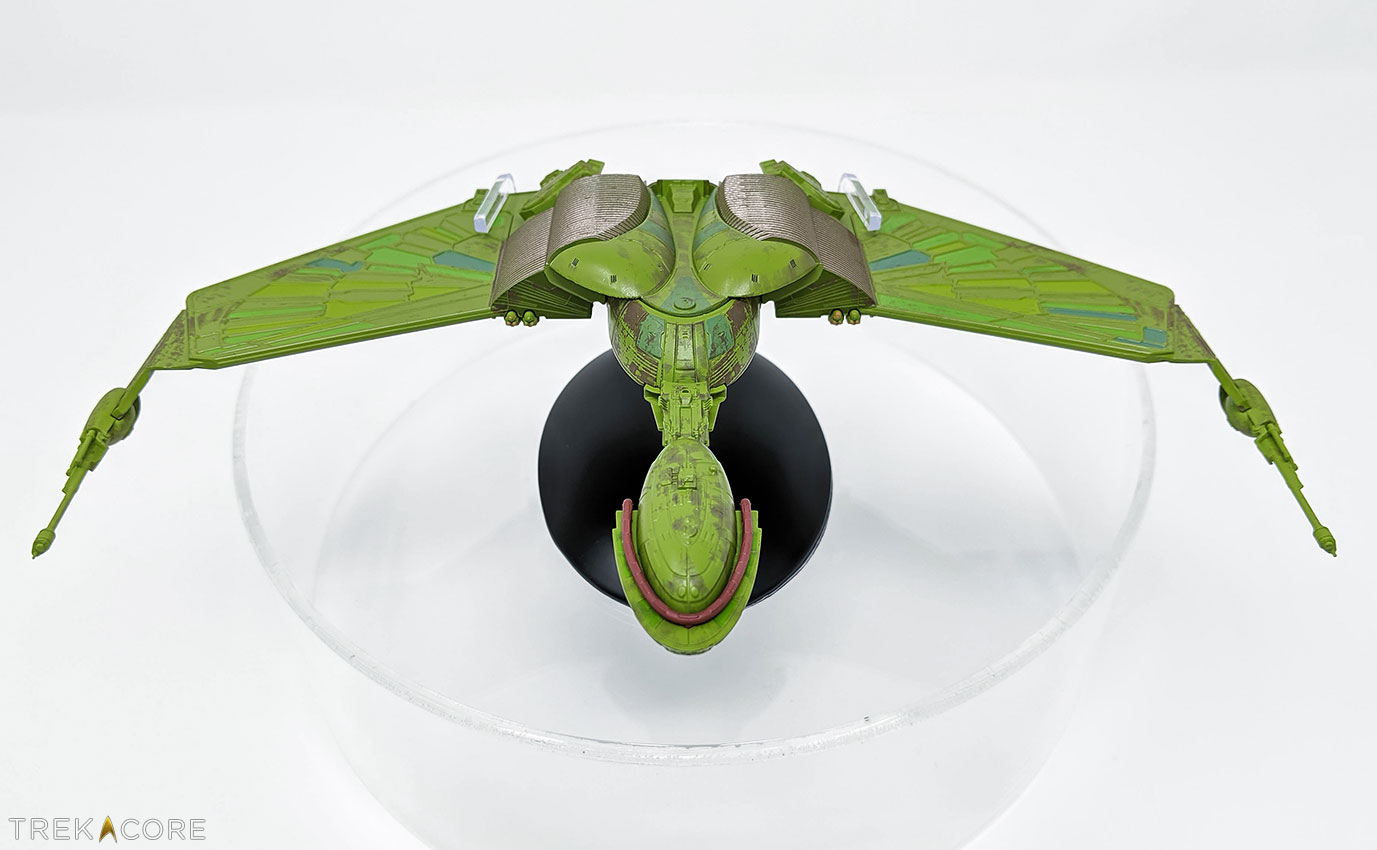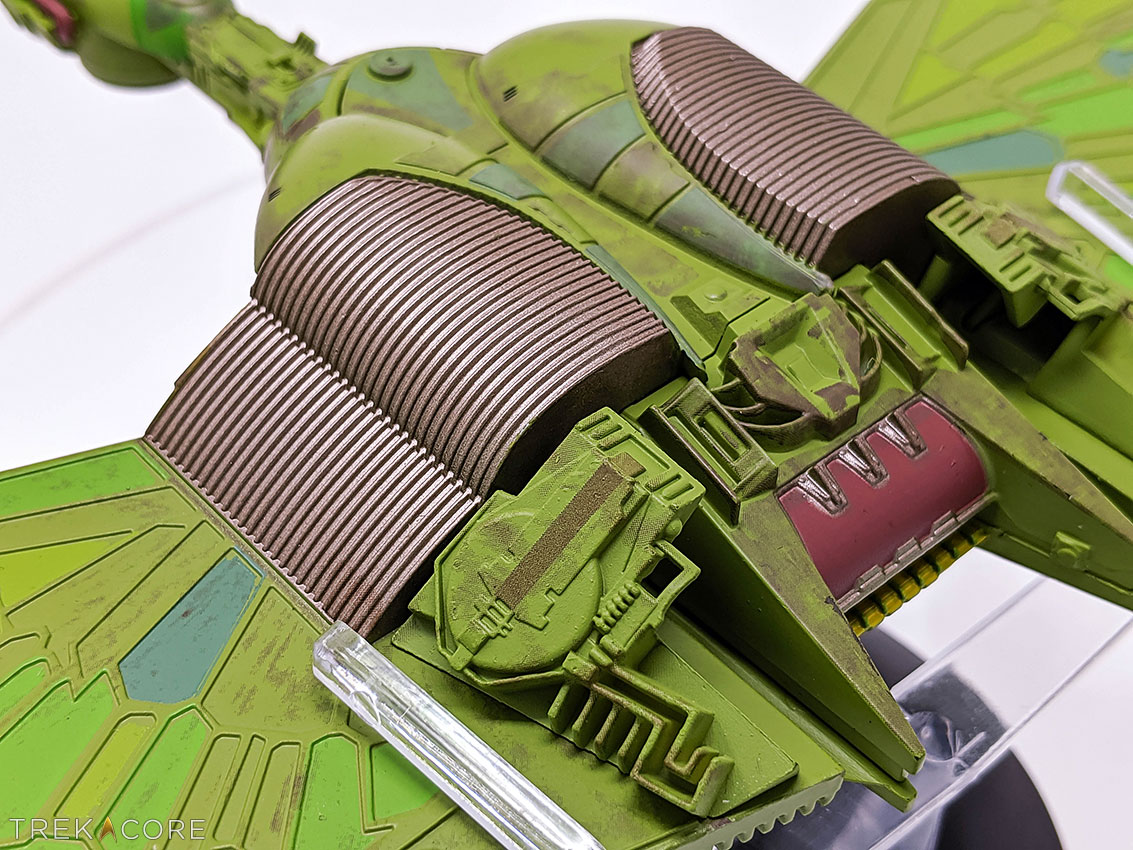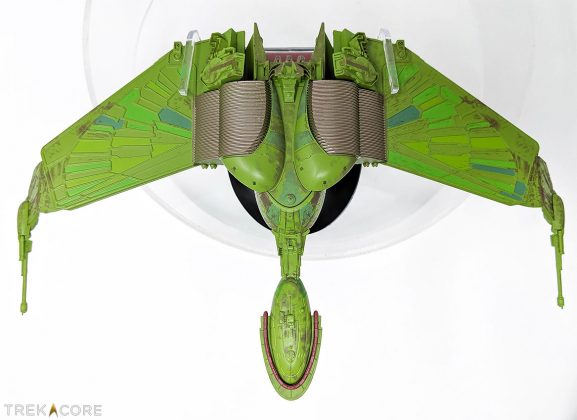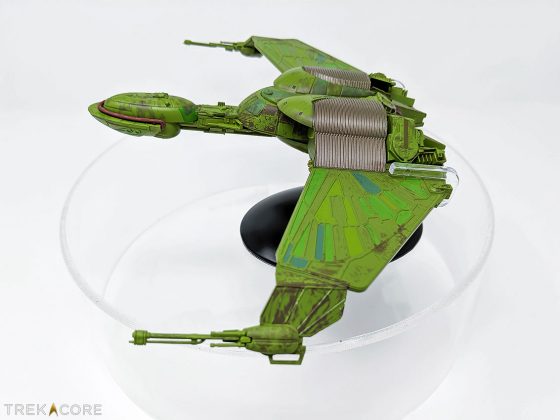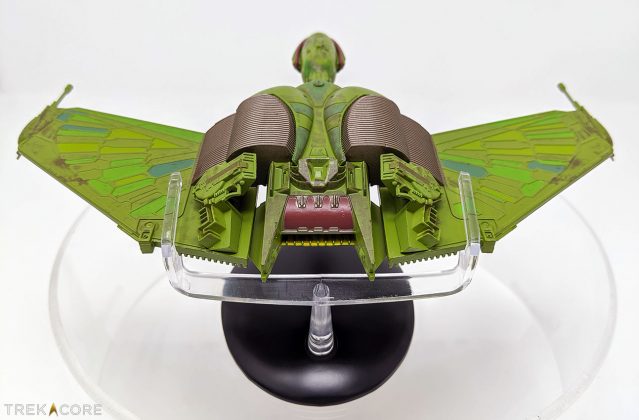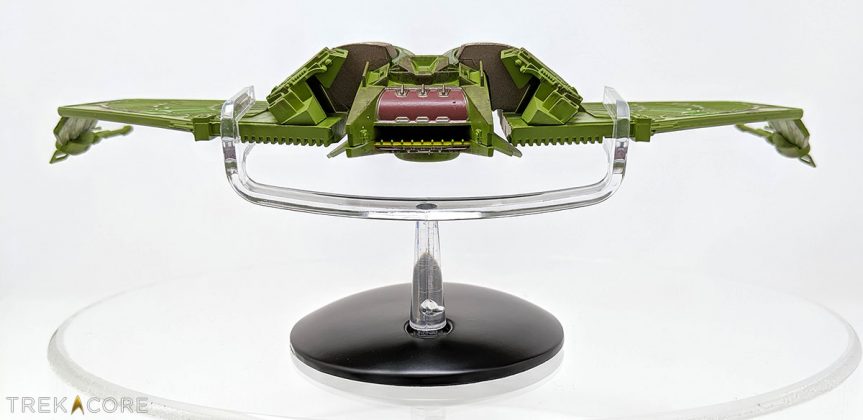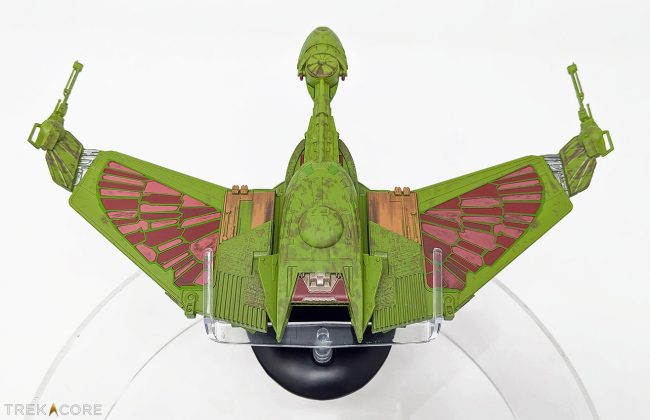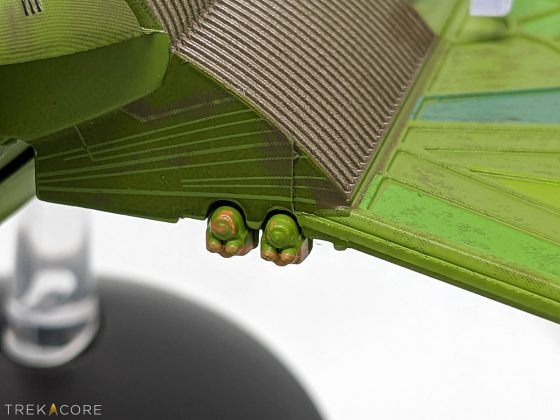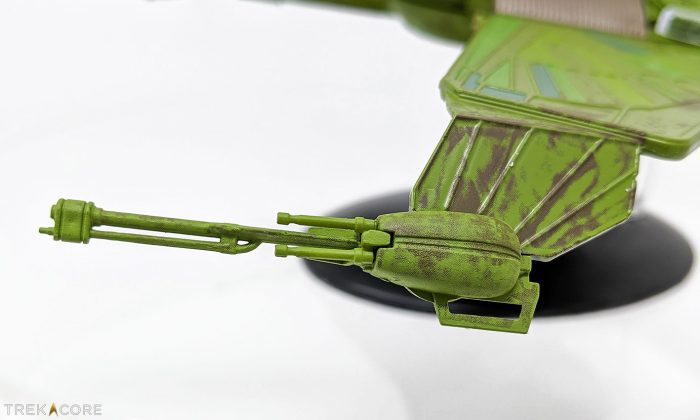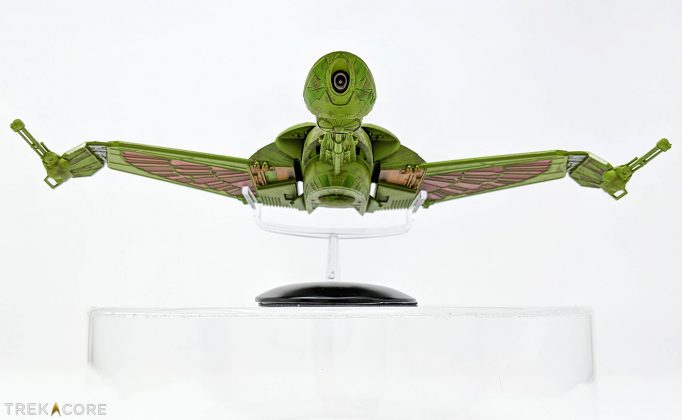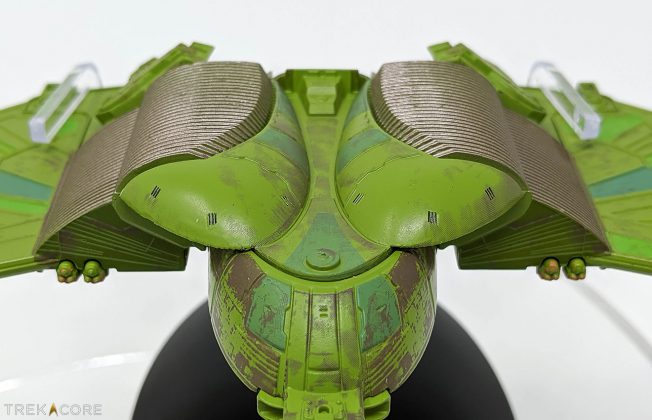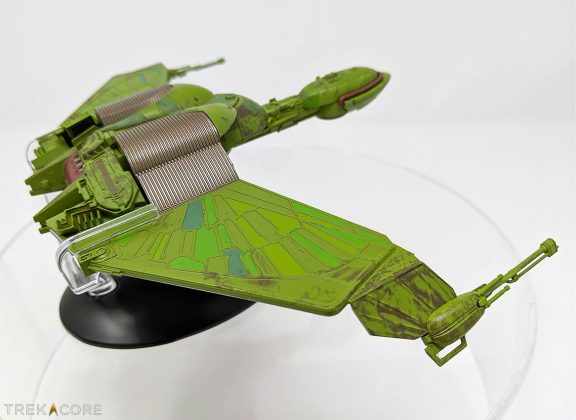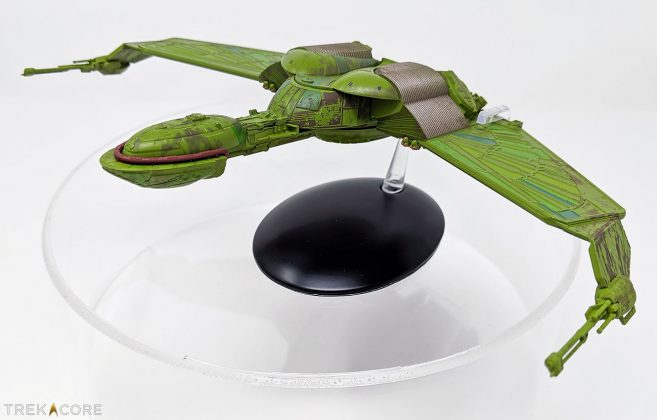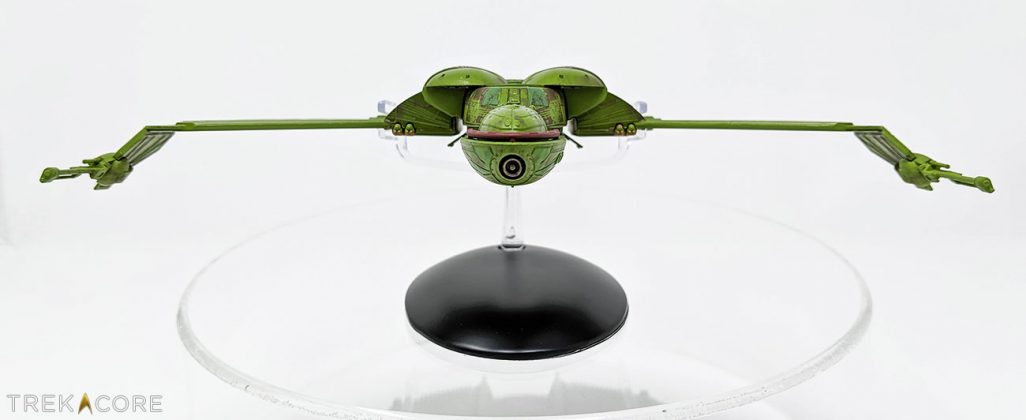Swooping into your collection, straight from Qo’noS, is the first Star Trek alien addition to the XL-sized Official Starships Collection, the iconic Klingon Bird of Prey. Measuring over nine inches across the wingspan, the Bird of Prey is depicted in with wings in the commonly-seen ‘flight’ position, often used in Trek films.
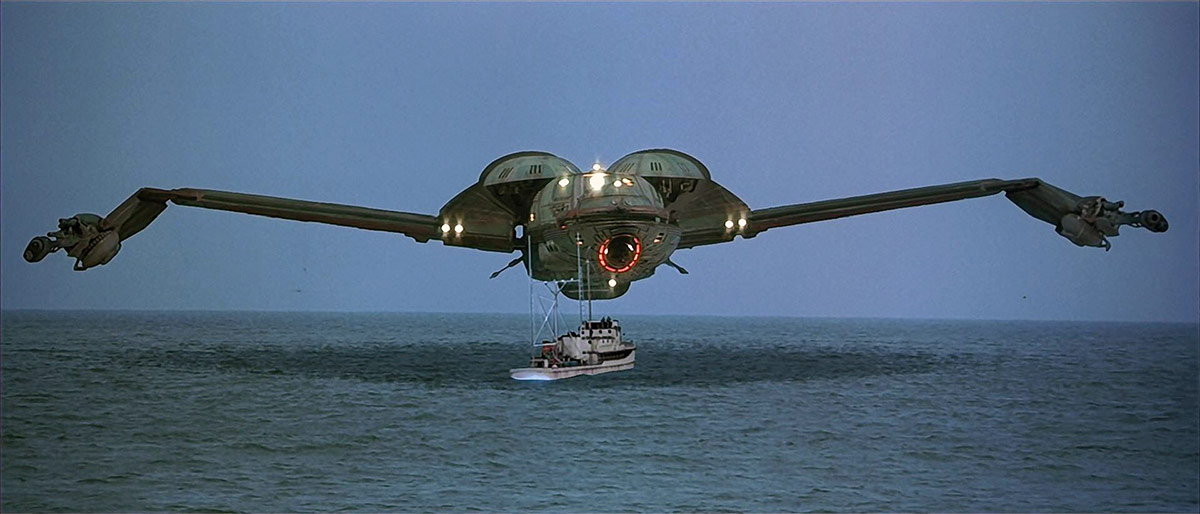
Originally designed by Nilo Rodis and David Carson for Star Trek III: The Search for Spock, the Bird of Prey is one of the most iconic alien ships from the Star Trek franchise. It is fitting, therefore, that it is Eaglemoss’s first non-Federation release in the larger size.
At least one more alien ship has been announced in the last few months – the Next Generation-era Romulan Warbird is also now rolling out in the larger scale.
The Bird of Prey model is wide and weighty; its wings are die-cast metal while the central section, neck, and bridge area are plastic. There are almost no new details on the XL model that are not present on the smaller version of the ship available in the regular line, a function largely of the ship lacking many of the tiny little details present on Federation ships.
As a result, while this is a great model for Bird of Prey fans, if you already own the smaller version you won’t be appreciably improving upon the model, aside from its size. That is not a reflection on the XL model being poor, but rather a rare case where the standard version was more or less as good as any model could be.
As mentioned, the wing position for the XL ship is horizontal. For Eaglemoss, this is likely a practical decision. While it would likely be preferable for many fans that Eaglemoss produce the ship with the wings swept downwards, placing the wings in that position would require a larger box and therefore likely increase the company’s costs.
The flatter profile for the horizontal wing position is probably both a little easier to produce and to ship, and also feels more “cinematic.”
The original ship model built by Industrial Light & Magic had motors that controlled the wings. As the model aged, it became more difficult to change the positions, which is why the ship largely appeared with the wings down through The Next Generation and early Deep Space Nine before the physical model was retired in favor of digital.
The wide stand grips the model around either wing at the back. The fit is okay; not overly snug but not overly loose like the USS Voyager XL, which has a really difficult time remaining gripped to the stand. Once set up, this model is probably not going anywhere if you don’t bump into it.
The subscription-sized model in the regular Official Starships Collection has been produced in all three wing positions; horizontal, as with the XL, wings down, as is most commonly associated with the Bird of Prey in the 24th century shows, and wings up for landed.
It is unlikely that we will see other variations in the XL line, though given that the entire Eaglemoss line of ships pushes ahead with no end in sight, I suppose you should never say never!
Overall, the Bird of Prey is a great model for Klingon fans and completists alike. Though it may be lacking in many additional details from the standard release, it’s a great ship design and as a result is also a great model. It’s easy get, if your collecting tastes include alien ships.
Fans in the United States can order this model directly from Hero Collector’s US site for $74.95, while Klingon aficionados in the UK can pick it up for £49.99 from Hero Collector locally.
![]() Keep watching TrekCore for all the Eaglemoss news set to beam out of this weekend’s Destination Star Trek convention, where the Hero Collector team are set to reveal even more about the next wave of Official Starship Collection products.
Keep watching TrekCore for all the Eaglemoss news set to beam out of this weekend’s Destination Star Trek convention, where the Hero Collector team are set to reveal even more about the next wave of Official Starship Collection products.

